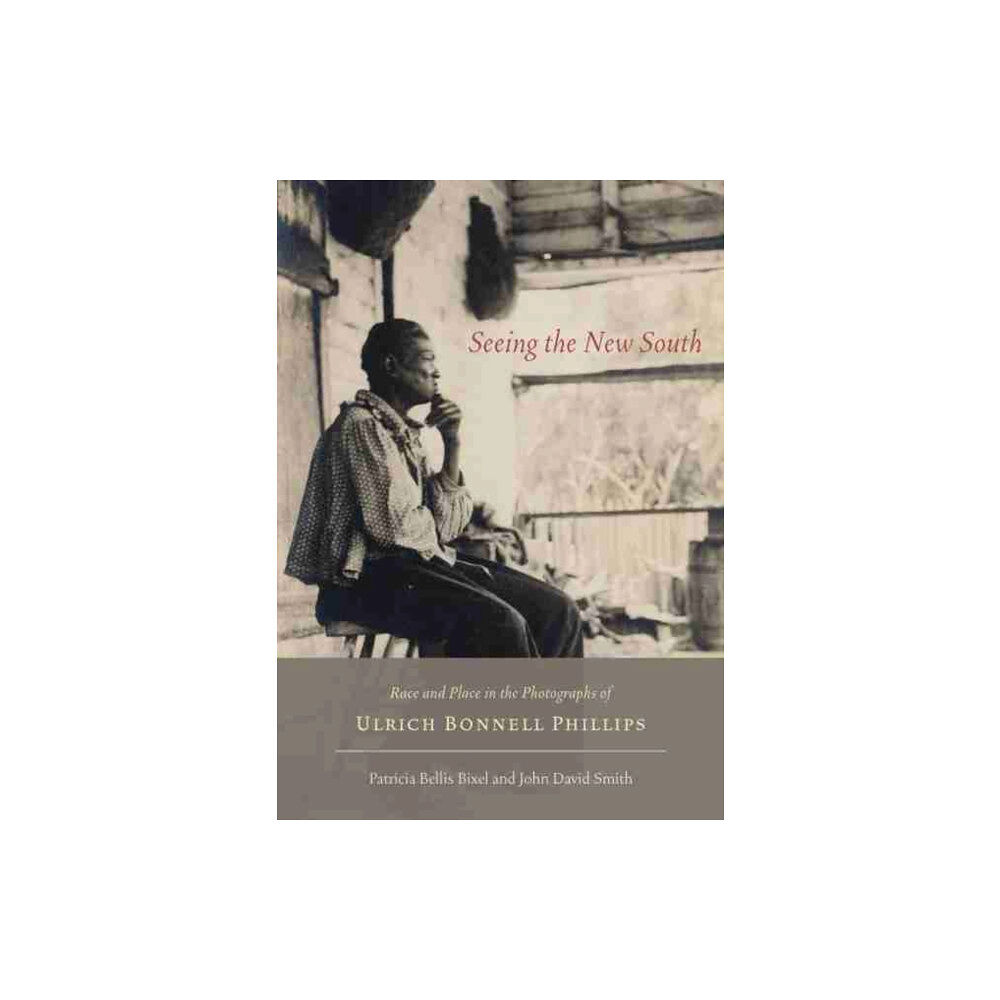- Hem
- Böcker
- Kurslitteratur
- Historia
- Seeing the New South (inbunden, eng)

Seeing the New South (inbunden, eng)
Ulrich Bonnell Phillips (1877–1934) established a reputation as one of the early twentieth century's foremost authorities on the history o...
489 kr
535 kr
Slut i lager
- Fri frakt
Fri frakt över 299:-
Snabb leverans
Alltid låga priser
Produktbeskrivning
Ulrich Bonnell Phillips (1877–1934) established a reputation as one of the early twentieth century's foremost authorities on the history of African American slavery and the Old South. An empiricist, Phillips approached his subjects analytically and dispassionately, and his scholarship shaped historical investigation of the South for decades.
Phillips was an empiricist and based his writing on an array of primary sources, including a growing collection of photographs he accumulated during his research. These images of plantation crops and machinery, agricultural scenes, distinctive architecture, white southerners, and former slaves and their descendants collectively record much about the life and labour in the rural South three decades before the Farm Security Administration undertook its own documentary projects during the New Deal.
In Seeing the New South, photography historian Patricia Bellis Bixel and Phillips scholar and historian John David Smith delve into the visual record Phillips left behind, publishing many of these photographs for the first time, and integrating his photographic archive with his research and teachings on the history of the South.
For example, his Life and Labor in the Old South, published in 1929, was well illustrated with useful photographs. The bulk of Phillips's papers resides in the Sterling Memorial Library at Yale University. The collection includes sixty lantern slides and many photographic prints that Phillips employed in his work.
Bixel and Smith uncovered another five hundred images that greatly expanded Phillips's visual archive. Taken between 1904 and 1930, these images provide glimpses of a Southern landscape rarely seen and even more rarely photographed, offering a striking visual account of early-twentieth-century life in the rural South.
Phillips deliberately sought out images of buildings and agricultural scenes emblematic of the South, representative portraits of white and black southerners, and distinctive depictions of farm and town life. Some photographs reinforce Phillips's arguments about the general backwardness of an impoverished rural South and about the limitations of the region's agricultural and industrial economies.
But his images also documented active independent black and white communities with diverse economic practices and subcultures. This first-ever collection of Phillips's photographs provides dramatic documentation of economic and social life during an era seldom captured on film, yielding striking visual portraits of human dignity in black and white.
Phillips was an empiricist and based his writing on an array of primary sources, including a growing collection of photographs he accumulated during his research. These images of plantation crops and machinery, agricultural scenes, distinctive architecture, white southerners, and former slaves and their descendants collectively record much about the life and labour in the rural South three decades before the Farm Security Administration undertook its own documentary projects during the New Deal.
In Seeing the New South, photography historian Patricia Bellis Bixel and Phillips scholar and historian John David Smith delve into the visual record Phillips left behind, publishing many of these photographs for the first time, and integrating his photographic archive with his research and teachings on the history of the South.
For example, his Life and Labor in the Old South, published in 1929, was well illustrated with useful photographs. The bulk of Phillips's papers resides in the Sterling Memorial Library at Yale University. The collection includes sixty lantern slides and many photographic prints that Phillips employed in his work.
Bixel and Smith uncovered another five hundred images that greatly expanded Phillips's visual archive. Taken between 1904 and 1930, these images provide glimpses of a Southern landscape rarely seen and even more rarely photographed, offering a striking visual account of early-twentieth-century life in the rural South.
Phillips deliberately sought out images of buildings and agricultural scenes emblematic of the South, representative portraits of white and black southerners, and distinctive depictions of farm and town life. Some photographs reinforce Phillips's arguments about the general backwardness of an impoverished rural South and about the limitations of the region's agricultural and industrial economies.
But his images also documented active independent black and white communities with diverse economic practices and subcultures. This first-ever collection of Phillips's photographs provides dramatic documentation of economic and social life during an era seldom captured on film, yielding striking visual portraits of human dignity in black and white.
| Format | Inbunden |
| Omfång | 136 sidor |
| Språk | Engelska |
| Förlag | University of South Carolina Press |
| Utgivningsdatum | 2013-01-30 |
| ISBN | 9781611171051 |
Specifikation
Böcker
- Inbunden, 136, Engelska, University of South Carolina Press, 2013-01-30, 9781611171051
Leverans
Vi erbjuder flera smidiga leveransalternativ beroende på ditt postnummer, såsom Budbee Box, Early Bird, Instabox och DB Schenker. Vid köp över 299 kr är leveransen kostnadsfri, annars tillkommer en fraktavgift från 29 kr. Välj det alternativ som passar dig bäst för en bekväm leverans.
Betalning
Du kan betala tryggt och enkelt via Avarda med flera alternativ: Swish för snabb betalning, kortbetalning med VISA eller MasterCard, faktura med 30 dagars betalningstid, eller konto för flexibel delbetalning.
Specifikation
Böcker
- Format Inbunden
- Antal sidor 136
- Språk Engelska
- Förlag University of South Carolina Press
- Utgivningsdatum 2013-01-30
- ISBN 9781611171051
